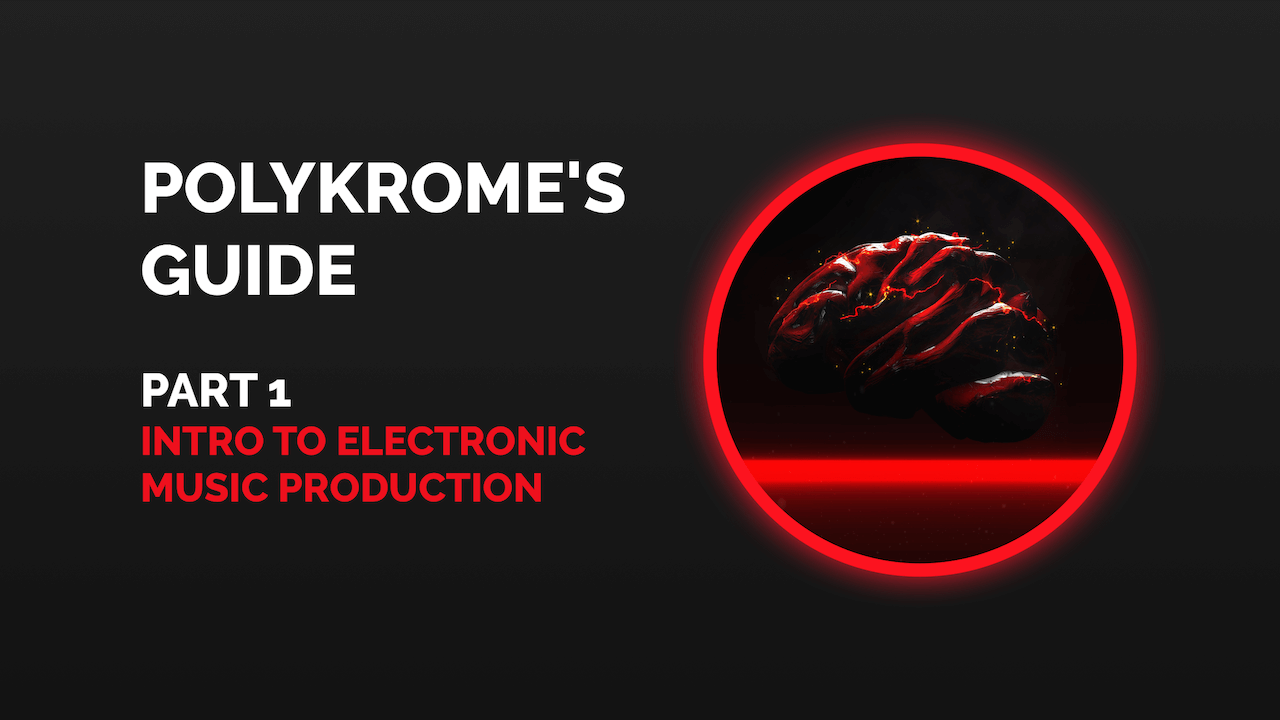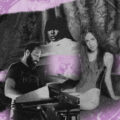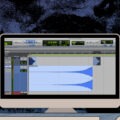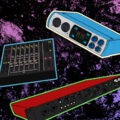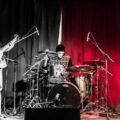Today I’m going to break down “Braindeath”, a song I recently released on Dack Janiels and Wenzday’s label 40 Oz Cult. I’ll go over my approach to producing compelling music in the absence of vocals or other dominant melodic voices, from establishing my sound palette, to composing and arranging my song, to the final mix.
As a producer, it’s your job to put the listener through a journey that’s interesting and memorable, giving them a little bit of what they wanted, and a little bit of what they didn’t know they wanted.
A lot of music relies on the vocals to do that, but as a composer, beat-maker, or electronic music producer, you don’t have that same privilege. Instead, you need to find other ways to take the vision you have for your music and turn it into something your listeners can appreciate. Here’s my process for doing just that.
First, let’s listen to the final product
Step 1: Establish your unique sound palette
Every song is built from a set of sounds called a sound palette, which includes a combination of synthesizer patches, audio samples, recorded material, as well as your own sound recording and processing techniques. Part of an artist’s job is to develop a palette that, over time, helps establish their unique sound. As an in-the-box producer, my palette comprises synth patches, samples, and some processing techniques.
My sound palette plays a big role in the early development of every song I produce. I start by choosing a vision for the song; I then create and gather the sounds from my palette that I think will best serve that vision.
For “Braindeath”, I wanted to create a song that was heavy and epic – something that would rumble the foundations of a live venue. With that vision in mind, the first thing I did was spend a few hours designing synth patches that I believed would help bring my vision to life. The pulsating synth in the intro and many of the sounds you hear in the drop are the end-result of that session.
Learn more about establishing your sound palette ▸
Step 2: Transfer your vision to the project
Once your song’s sound palette is established, it’s time to put it to work. In most electronic music, the drop is where the song’s vision really shines through, so I like to work on that part first. Ensuring my chosen patches work for the drop makes the rest of the creation process a lot easier.
So, with my synth patches ready to go, I’ll start writing MIDI notes for the ones I think would work best in my drop. I like to work with several different bass sounds to avoid sounding linear and repetitive.
In “Braindeath”, I made sure I had elements frequently jumping in and out of the drop to keep it interesting and unpredictable by changing the rhythms and textures of the sounds used. This step took a bit of trial and error to get right, but by the end, I had a rough idea of what my drop would sound like.
Step 3: Sort out the not-so-small details
Is the track going to be produced in a specific genre? Is it meant to be played in a specific environment? How resonant and impactful should the drop be? Is the intro and buildup meant to foreshadow the drop or contrast it? How fast is it going to be? What key sounds best? These details are a bit boring to work out, but they’re essential to establishing a form and structure for your song.
For “Braindeath”, my top priority was impact. I wanted the song to hit listeners hard in the chest when I played it live at a venue, with a heavy, dragging bass track that they’d feel to their core.
I decided to write it in F minor, a key that allows the sub to resonate more clearly (bass sounds are most resonant when played between D# and G#). I set the tempo at 90 bpm and kept the drum beat simple and consistent so it wouldn’t get in the way of my synths, which I wanted to be the song’s main driving force.
Step 4: Add structure and rhythm
This is the part where you figure out how to deliver your song’s vision with the highest possible impact. Structure refers to the order and duration of each section (intro, buildup, drop, etc.) and rhythm refers to the patterns you use throughout the song. Combined, they offer a framework for you to develop the listener’s journey.
Structure
Typically, you want to build your song around two drops, the first one appearing around the 1-minute mark and the second one around the end of the song. The duration of each section depends on the song’s tempo; higher-tempo songs should have more bars in each section than slower songs.
I developed this structure for “Braindeath” with its 90 bpm tempo in mind:
- Intro – 16 bars
- Buildup – 8 bars
- Drop – 16 bars (1:04)
- Break – 16 bars
- Buildup – 16 bars
- Drop 2 – 16 bars
Rhythm
It’s important to give your rhythm the attention it deserves; in electronic music, rhythm is as important to a song’s memorability as melody. A great rhythm can find its way into a listener’s brain and stay there for days, so it’s worth coming up with some cool patterns. You can do this fairly easily by opening up your DAW’s MIDI editor and writing notes on the grid – adding, removing, and resizing notes as the loop plays.
Creating rhythm patterns is one of my favourite parts of the production process, which is why you’ll hear so much rhythmic variety in my music. In “Braindeath”, you can hear the rhythm of the pulsating synth from the start of the song right up to the drop. During the drop, I introduce rhythmic variations every 2 bars, as well as a change in instrumentation every 8 bars.
Step 5: Add melody
Not all music creators leave melody to the end of the production process. If you’re producing melodic music, you’ll need to start developing it in Step 2. Because my vision for “Braindeath” was to leave a heavy rhythmic impact on the listener, the melody really only appears during the middle break (after the first drop) and I was able to get away with writing it at the end of the production process.
The break in “Braindeath” features a repeating piano melody playing on top of a big chord progression. I wanted to take the listener somewhere they weren’t expecting to go – from a heavy bass drop to an epic melody that takes the song to another level musically before converging back to a familiar buildup for the second drop.
Remember, music creation is about creating a non-linear musical journey that’s unpredictable, memorable, and exhilarating for the listener. Creating a sharp contrast between the drop and the break is a sure way to achieve that.
—Final notes—
It’s incredible what we can create using computers, but don’t let your tools control or limit your musical expression. Through unique sound design, rhythms, and musicality, you can create electronic music that is catchy, memorable, and unpredictable, despite the lack of vocals or lyrics to keep your audience interested.
Polykrome is a Montreal-based producer and DJ, and a graduate of Recording Arts Canada.
